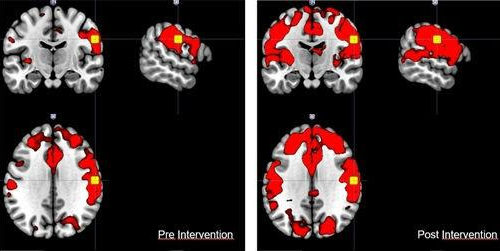FUNDAÇÃO DE AMPARO À PESQUISA DO ESTADO DE SÃO PAULO IMAGE: FMRI SCANS OF A STROKE PATIENT BEFORE AND AFTER REHABILITATION USING NON-IMMERSIVE VIRTUAL REALITY SOFTWARE CREDIT: RAPHAEL CASSEB/UNICAMP By José Tadeu Arantes | Agência FAPESP – Virtual reality-based rehabilitation programs are becoming an important complement to conventional motor therapy for stroke patients and individuals with...
Tag: <span>Neurodegenerative disease</span>
A neurodegenerative-disease protein forms beneficial aggregates in healthy muscle
Protein aggregation is a characteristic of several neurodegenerative diseases. But disease-associated aggregates of the protein TDP-43 have now been shown to have a beneficial role in healthy muscle. Most neurodegenerative disorders are characterized by the build-up of clumps of proteins in the brain1. A prevailing view in the field is that these large protein assemblies...
What helps form long-term memory also drives the development of neurodegenerative disease
Dublin, Tuesday 22nd May, 2018 – Scientists have just discovered that a small region of a cellular protein that helps long-term memories form also drives the neurodegeneration seen in Amyotrophic Lateral Sclerosis (ALS). This small part of the Ataxin-2 protein thus works for good and for bad. When a version of the protein lacking this...
Researchers identify risk genes for amyotrophic lateral sclerosis
The largest analysis to date of genetic data in amyotrophic lateral sclerosis (ALS) – the muscle-crippling neurodegenerative disease that afflicted the late astrophysicist Stephen Hawking and cut short the career of iconic Yankee baseball slugger Lou Gehrig – has identified two previously unrecognized genetic risks that are significantly associated with the disease. In the...
New database to connect neurodegenerative disease community
Researchers studying neurodegenerative disease can now look up cohort studies and make connections through a new online database. The JPND Global Cohort Portalopens in new window, created by the EU Joint Programme in Neurodegenerative Disease Research (JPND) for which the MRC is a founder member, is a searchable online database of neurodegenerative disease cohort studies. Long-term...
Scientists unpack how Toxoplasma infection is linked to neurodegenerative disease
GLT-1, a glutamate transporter, soaks up glutamate (a neurotransmitter) released by neurons and converts it back into a safer substance. Toxoplasma gondii, a protozoan parasite about five microns long, infects a third of the world’s population. Ingested via undercooked meat or unwashed vegetables, the parasite infects 15-30 percent of the US population. In France and...
Link between birth defect and Neurodegenerative diseases
A new study has found a link between neurological birth defects in infants commonly found in pregnant women with diabetes and several neuro degenerative diseases including Alzheimer’s, Parkinson’s and Huntington’s diseases. This is the 1st time this link has been identified, it may indicate a new way to understand, and perhaps treat both neural tube...
Conversion of brain cells offers hope for Parkinson’s patients
Dopamine neurons degenerate and die in the brains of people suffering from Parkinson’s disease. Researchers at Karolinska Institutet have made significant progress in the search for new treatments for Parkinson’s disease. By manipulating the gene expression of non-neuronal cells in the brain, they were able to produce new dopamine neurons. The study, performed on...
New toxic pathway identified for protein aggregates in neurodegenerative disease
Led by professor Ludo Van Den Bosch (VIB-KU Leuven), scientists from Belgium, the UK and the US have identified new processes that form protein “clumps” that are characteristic of amyotrophic lateral sclerosis (ALS) and frontotemporal lobar degeneration (FTLD). How these proteins, which can bind RNA in normal cells, stick together has remained elusive until recently,...

